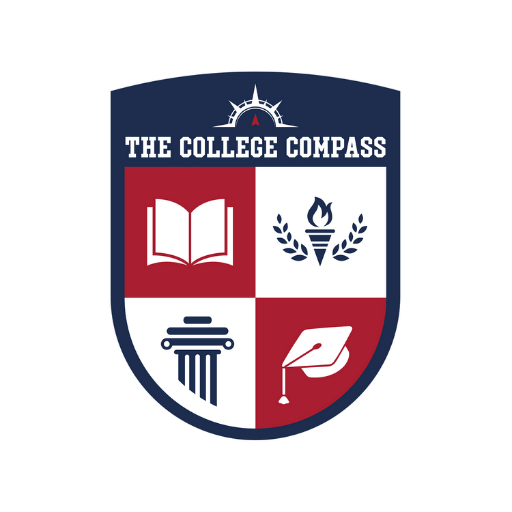Animation Degree 101 - Everything You Need To Know in 2024
Find what an Animation degree is, what you’ll learn, and what you can do with it.
- By: The College Compass Team

With the rise of new mediums like virtual and augmented reality, the demand for skilled animators is only expected to increase.
Living in today’s day and age, where Artificial Intelligence has started to influence the field of animation, you may be having doubts about whether getting an Animation Degree in 2024 is really worth it.
Think about the last time you scrolled through social media – I bet you saw at least one animated ad! Or take a look at Pixar’s latest Oscar-winning animated film, “Soul.” This is the work of skilled animators who completed the journey of constant change in the animation industry, tactically adapting to the new transitions and techniques!
So, the answer is: Yes!
An Animation Degree is still very relevant and valuable as more and more students are interested in pursuing a career in this amazing field.
Animation can explain whatever the mind of man can conceive.
Walt Disney
With technology evolving, new methods and tools are introduced, making formal education an excellent way to stay up-to-date.
Let’s start with the basics.
What is an Animation Degree?
The Animation Degree is a program that enables you to learn about the technical and artistic elements involved in creating animations for different platforms.
It provides a comprehensive learning environment where students can explore various aspects of animation, such as:
- 2D drawing
- 3D modeling
- digital artistry
- character design
- storyboarding
You’ll get hands-on experience with industry-standard software tools like:
Before you consider whether this program is the perfect pick for you, let’s take a look at the various degrees and levels at which you can pursue the career of your dreams:
What are the Animation Degree types & levels?
From Certificate programs to a Master’s degree, here are each of the degree levels in animation:
Certificate in Animation
Although short-term, this program offers foundational knowledge and practical skills in animation. Typically lasting several months to a year, the curriculum often includes courses in 2D and 3D animation, digital art, and visual effects, with a focus on industry-standard software.
Entry requirements:
- A high school diploma or equivalent (GED)
Associate in Animation
This two-year college program provides students with a broad understanding of animation techniques, software, and principles. It’s a step up from a certificate program, offering more comprehensive training and usually requiring a larger commitment.
Entry requirements:
- A high school diploma or equivalent (GED)
- A minimum GPA
Bachelor's Degree in Animation
Taking usually four years to complete, this degree provides an in-depth understanding of the principles of animation, coupled with practical skills in a wide array of animation techniques and technologies.
Entry requirements:
- A high school diploma or equivalent (GED)
- A minimum GPA, Placement tests (SAT or ACT)
- Letter of recommendation
- Admission essay
Master’s Degree in Animation
A Master’s Degree in Animation allows students to specialize in particular areas of interest and prepares them for leadership or highly skilled roles within the industry. Master’s programs typically last one to two years full-time, although part-time options may also be available.
Entry requirements:
- Bachelor’s Degree in Animations or a related field
- Placement tests (SAT or ACT)
- Portfolio
Disclaimer: The entry requirements for a degree in Animation may vary depending on your university and state. However, here we have outlined the general qualifications that are frequently asked for.
What types of specialties and concentrations can you find in Animation Degree Programs?
The evolution of technology has greatly impacted how animation is studied. Earlier, it was hand-drawn when artists were relying just on pen and paper. Now it’s largely computer-based, with different kinds of gadgets and programs. The principles remain the same, but tools have changed, allowing your creativity to come alive.
Here are some of the most popular areas of majors in Animation Degree programs:
2D Animation
Though it may seem outdated, this traditional form of animation is still in demand in areas like advertising, television, mobile apps, and educational content. Students of this major draw skillfully by hand, and as 2D animators, they often work as storyboard artists, character animators, or layout artists.
3D Animation
The magic behind the curtains – this major focuses on creating characters and scenes in a three-dimensional space which you will master by using software like Maya, Blender, or 3DS Max. It’s particularly relevant in film, video games, and virtual reality.
Visual Effects (VFX)
VFX artists add special effects to live-action footage, making it seem like the impossible is happening right before our eyes. You’ll learn how to use different techniques for mind-blowing results.
Motion graphics
Essential for advertising and branding, this major revolves around animating graphic elements like text, logos, and illustrations. Graduates of motion graphics often find work in advertising agencies, design studios, and corporate marketing departments.
Game animation
Here you will bring video game characters and environments to life! It’s a booming industry with a high demand for skilled animators. Careers in this field include character animators, rigging artists, and environmental artists.
Virtual Reality (VR)
In this emerging field, you’ll find out all about creating mesmerizing 3D environments. It’s an exciting area with gaming, education, healthcare, and real estate applications. VR animators even work on creating interactive games, virtual tours, or training simulations.
Courses and Curriculum in the Animation Degree
When considering animation and the different degree options, it’s natural to wonder about the courses included in this program.
Understanding the various classes offered can help you make an informed decision about pursuing an Animation Degree. There are foundational and advanced courses that will help you.
Here’s a sneak peek of what lies in store when choosing your ideal path:
Drawing
This course provides fundamental drawing skills crucial for any animator. Here, you’ll explore figure drawing, perspective, and visual composition.
Storytelling
Embrace your narrative skills, and you’ll learn everything about storyline structures, character development, and visual storytelling techniques to engage your audience effectively.
Character Design
Turning ideas into reality, here you will learn how to create compelling characters, considering their physical attributes, personality traits, and roles within a story.
Digital Modeling
Using software like Maya or Blender, this course introduces you to the process of creating 3D models.
Texturing
This class will teach you how to apply 2D images to your 3D models to give them a realistic appearance.
Rendering
Here, you’ll explore how to convert 3D models into 2D images or animations, considering elements like lighting, shading, and color.
Advanced Character Animation
This class takes a deep dive into creating believable, complex animations that evoke emotion and personality.
Visual Effects Simulations
Using VFX software, you’ll learn how to create realistic simulations like fire, smoke, and water.
Virtual Reality Animation
In this class, you’ll explore the process of creating interactive, immersive 3D environments for VR.
Interactive Media
This course examines how to create animations for interactive platforms, including video games and web applications.
On-campus vs. Online Animation Degrees
Before choosing an on-campus or an online animation course, you should take into account the following factors:
- Lifestyle and Responsibilities
- Learning Style
- Costs and Location
- Networking Opportunities
On-Campus Animation Degrees
This traditional type of learning takes place entirely in person at a university or college campus. Here, you’ll have direct access to professors and school facilities like computer labs and libraries.
If you are someone who is practical and wants to experience things firsthand, this is a better option for you as you’ll get actual hands-on training.
With all the networking opportunities, you’ll meet fellow students with the same passions and ideas as yourself, making your social circle bloom.
However, on-campus programs tend to be more expensive due to additional costs like housing and transportation. They often require commuting or relocating, making your daily timetable crowded.
Online Animation Degree Programs
These programs are organized entirely online, allowing students to learn from anywhere. With the high flexibility in terms of location and schedule, they are often less expensive because there are no commuting or housing costs.
If you like learning at your own pace and in your own comfort, you should look into these types of programs.
Keep in mind that your face-to-face interaction will be limited, and self-discipline and motivation will be necessary for a better studying experience.
Each option has benefits as well as drawbacks. Keep in mind that the best program depends on your personal needs, learning style, and career goals.
What to consider when choosing an Animation Degree?
By now, you should have a clearer understanding of what an animation degree entails and the topics you’ll cover in a program. However, you should know that choosing the right program will impact your education, job opportunities, and your overall career path within the animation field.
So, how do you choose the perfect animation degree that aligns with your passion and goals? What factors should you consider to ensure your educational investment lays a solid foundation for your dream career?
Let’s break it down:
1. Program Reputation
Reputation can be a good indicator of a program’s quality. Look at rankings and reviews of the program, the school’s overall reputation, and its standing in the animation industry.
2. Faculty Expertise
The instructors’ industry experience and academic qualifications are essential. They are your mentors in this journey, so their knowledge, teaching capabilities, and willingness to assist students should be considered.
3. Industry Connections
Animation is a competitive field, and having a network can make a difference. Schools with strong ties to the industry might provide better internship opportunities, guest lectures, and job placements.
4. Alumni Success
Check where the program’s alumni are now. Are they working in your dream companies or roles? Successful alumni indicate the effectiveness of the program.
What can you do with an Animation Degree?
The opportunities for animation graduates are endless, with a steady demand for skilled animators in industries such as film, television, gaming, advertising, and virtual reality.
According to the US Bureau of Labor Statistics (BLS), the employment of special effects artists and animators is calculated to grow 5% from 2021 to 2031.
About 6,700 openings for special effects artists and animators are projected each year, on average, over the decade.
Recent figures from the BLS show that the average annual wage for special effects artists and animators was $78,790 in May 2021.
Career outlook
Today, animation is a booming field with the growth of digital media, making the possibilities countless. According to the BLS, special effects artists and animators held around 58,900 jobs in 2021.
If you are still considering your best pick, here are some job positions, along with a brief description, average salary, and degree level typically required:
Top Animation Degree Jobs you can get:
Animator
Create animated characters, objects, and scenes for films, television shows, video games, or advertisements.

Average Salary
$64,179 per year

Degree Level
Bachelor's
Storyboard Artist
Visualize and plan the sequence of shots in a film or animation by creating storyboards.

Average Salary
$72,508 per year

Degree Level
Bachelor's
Visual Effects Artist
Create realistic or stylized visual effects using computer-generated imagery (CGI) for films, television, or video games.

Average Salary
$79,656 per year

Degree Level
Bachelor's
Character Designer
Develop unique and visually appealing characters for animations, games, or visual media.

Average Salary
$53,693 per year

Degree Level
Bachelor's
Game Animator
Design and animate characters, objects, and environments for video games, creating smooth and engaging gameplay experiences.

Average Salary
$62,401 per year

Degree Level
Bachelor's
Art Director
Manage the overall layout and direct others who develop artwork or designs.

Average Salary
$100,890 per year

Degree Level
Bachelor's
Popular colleges with Animation Degree Programs
Here’s a lineup of some of the U.S.’s best colleges offering unbeatable Animation Degree Programs:
California Institute of the Arts (CalArts)
Known for producing many determined alumni who have gone on to work for industry giants like Pixar, CalArts offers a top-rated Bachelor of Fine Arts in Character Animation. The program emphasizes creativity and personal expression alongside technical skills.
University of Southern California (USC)
USC’s Animation and Digital Arts program is housed under the prestigious School of Cinematic Arts. This program’s hallmark is its academic approach, allowing students to explore all aspects of digital media.
Ringling College of Art and Design
Offering a Bachelor of Fine Arts (BFA) in Computer Animation, Ringling College is renowned for its industry-focused curriculum and high student placement rates in top animation studios. They emphasize storytelling, character development, and technical expertise.
Savannah College of Art and Design (SCAD)
With its well-rounded animation program, SCAD offers specialties like visual effects, game development, and 3D animation. Students get to work with industry-standard software and facilities.
Rhode Island School of Design (RISD)
RISD offers a BFA in Film/Animation/Video. Students are trained in various forms of animation, including stop motion, 3D, 2D, and experimental animation.
Featured Colleges
FAQ about Animation Degree Programs
Absolutely! In a rapidly evolving digital world, animation skills are in high demand across many industries, not just entertainment. Your degree can open doors to opportunities in gaming, advertising, virtual reality, education, and more.
You’ll develop a strong foundation in storytelling, character development, digital modeling, texturing, and rendering. Advanced classes will polish your skills in specialized areas such as 2D/3D animation, visual effects, and game design. Moreover, you’ll gain a good grasp of industry-standard software and technology.
A typical Animation Degree will take about two to four years of full-time study to be completed. But the duration can vary if you go for a different degree or study program.
Costs vary widely based on factors like whether the institution is public or private, in-state or out-of-state, and the degree level. Tuition fees can range from $5,000 to $15,000 per year. At a private university, the cost could easily exceed $30,000 per year.
Financial aid, scholarships, and work-study options can help make your education more affordable.
There are numerous workshops, online courses, and professional conferences you can attend to keep your skills fresh and up-to-date. Check out some of these suggestions:
- Advanced Character Animation – CGMA – This 10-week online program requires prior animation knowledge and focuses on areas such as body mechanics, acting beats, and visual storytelling;
- Coursera’s Virtual Reality Specialization – A five-course online program from the University of London that covers the basics of 3D graphics where you’ll learn to develop 3D scenes in Unity, create VR applications and more;
- Udemy’s Maya for Beginners: Complete 3D Animation Foundation Course – It covers everything from the basics of the Maya interface to advanced topics like 3D modeling, texturing, rigging, animation, and rendering.
You might also consider a Master’s Degree in Animation or a related field.
With an Animation Degree, your career isn’t limited to animator roles. You might find success as a storyboard artist, character designer, art director, or visual effects artist. There are also exciting opportunities in related fields like game design, film production, graphic design, or digital marketing. It’s a flexible degree with a world of possibilities!
Summary
In short, an Animation Degree can open doors to a dynamic career, matching the pace of today’s digital age. As an animation graduate, you’ll have limitless opportunities, with steady demand in film, television, gaming, advertising, and virtual reality industries.
But it all starts with choosing the right degree program. You’re not just choosing; you’re setting the stage for a vibrant career in animation.
Make that choice count!
If you feel like animation isn’t your cup of tea, take a look at our other articles in this related field, such as the Graphic Design Degree, or browse through the alluring Art & Design Degrees. Maybe you will find yourself more compatible in the Fine Arts world!
Editorial Disclaimer
The College Compass is reader-supported and committed to maintaining complete editorial independence. All views expressed are solely ours and are not influenced by any external party. We may include affiliate links in the article, which helps us earn a small commission to support our work. We always have a link to the source for any data or information we include. Learn more about our editorial practices.
